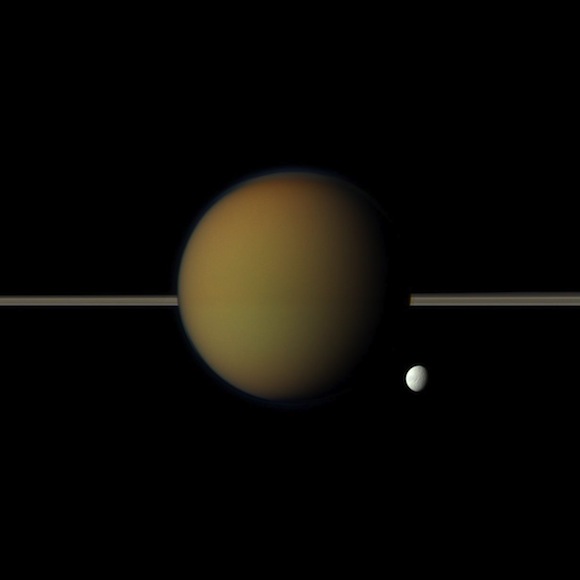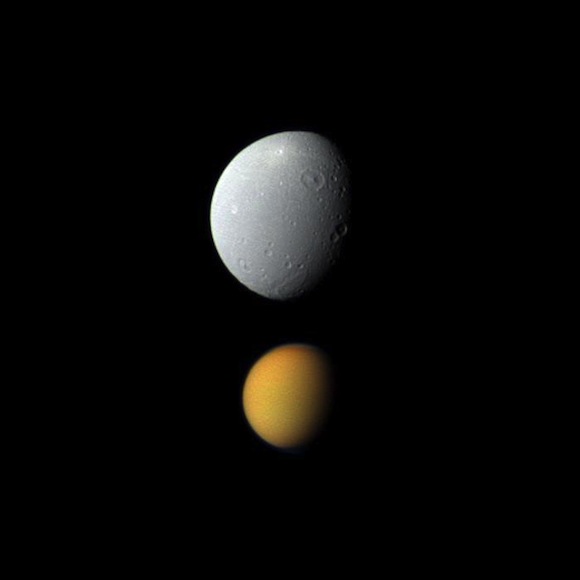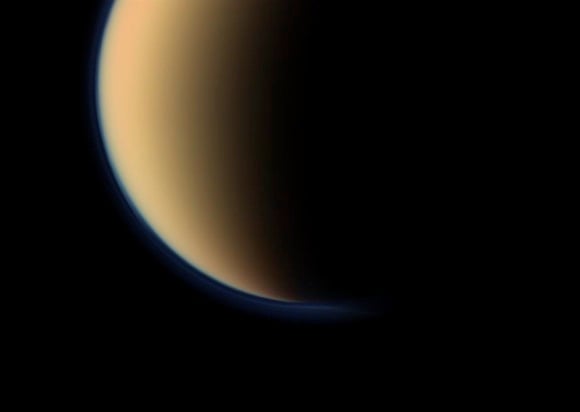This article is more than 1 year old
Explicit pics of glorious rounded globes snapped in festive Saturnalia
Curvy beauties moon for the camera
Probe puts moons in pole position

Floating through space and gleaming bright white thanks to its icy surface, Tethys stands away from - technically behind - the more colourful Titan. Saturn's rings lie between the two. Ithaca Chasma, a long ridge of cliffs on Tethys, can be faintly seen running along its surface.

They say the camera never lies - but in this case it plays tricks. Dione appears much larger than its bigger brother Titan in this shot. Titan is much farther from the spacecraft than Dione: 684,000 miles from Titan but just 85,000 miles from Dione. A mere walk across the street, in space terms.

Here we're staring at a wide-angle pic pointed towards the south polar region of Titan, which shows a dip within the moon's orange and blue haze layers. If you look closely, the moon's high-altitude haze layer appears to be blue whereas it's usually orange - the blue haze likely consists of smaller particles than the orange haze. Scientists think this depression of colour is a sign the north polar vortex will flip from north to south.
There's more information on the Cassini-Huygens mission - a joint effort by NASA, the European Space Agency and the Italian Space Agency - and the images taken in May right here. ®
